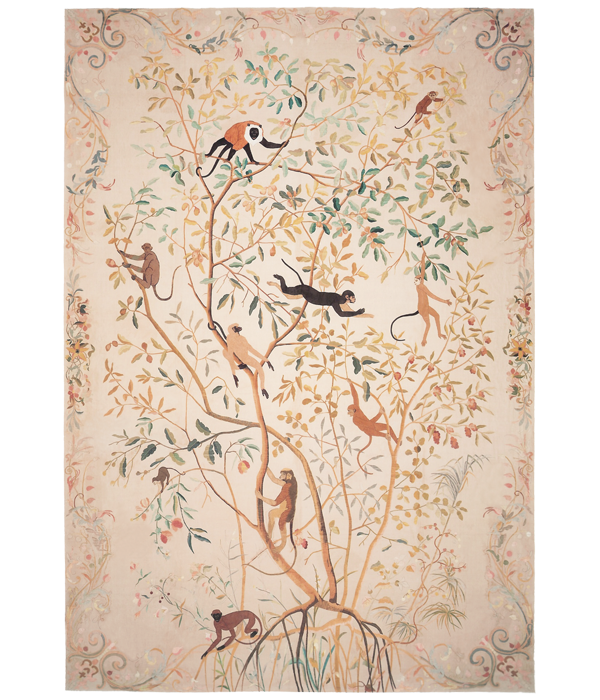Monkey Business
A rare Indo-Portuguese hanging, c1900.
19ft 6in x 13ft 7in : 593cm x 412cm
This rare hanging, of a central tree with various monkeys, all of different species in applique, some sitting and others swinging, comes from India, during the period of when the Portuguese were there. The workshops of Bengal were exporting these textiles, having influences of classical Spanish and Portuguese art and Italian Renaissance design combined with oriental themes, as in the tree of life design. The technique employed, of flat silk threads stitched onto a cotton canvas, was used on Italian textile of the 17th century and is known as Bordado de Castelo Branco, after the town in Portugal, where this work is still produced.
The genre of singeries, in textile decoration is quite rare, they were more commonly found on wallpaper, paintings, porcelain and silver, which were decorated with monkey figures, popular in the 17th and 18th cent., and give a playful, exotic Eastern image, (from the new territories), though applied to European designs.
The monumental size of this hanging indicates that it was woven as a special commission, in this case a castle in Switzerland, for a very large wall and as such, together with the scene, is a rare item. A comparable example has not been encountered, though a three panel needlework folding screen, with similar swinging monkeys, worked on by Eleanor Roosevelt between 1931 to 1934, does exist. The question being, did she see this hanging?
Literature: Georgiana Brown Harbeson, American needlework/history stitch, Bonanza, New York, 1938.
Provenance: A private collection, Switzerland.
Price : P.O.A.
Share this itemPrint info/picture sheet
Arrange a viewing
Enquire further
